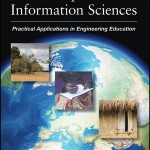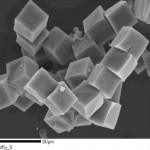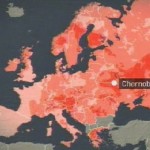Associate Professor Joshua Pearce (MSE/IMP), “A competitive free market for the distribution of electricity,” Hayek Foundation.
Professor Miguel Levy (Physics), “Highly-integrated, Multifunctional Magneto-photonic Crystal Devices,” US DOD, Air Force Research Laboratory.
Associate Professor Joshua Pearce (MSE/IMP), “International Collaboration in Prototyping of Sustainable Innovation,” NCIIA.
Professor Jaroslaw Drelich (MSE/IMP), “Inexpensive Antibacterial Water Filter for Presenting Diarrheal Disease,” Bill and Melinda Gates Foundation.
 Associate Professor Joshua Pearce (MSE/ECE) coauthored a chapter, “Hybridizing Virtual- and Field-Based Service Learning in Green IT,” in the book, Service-Learning in the Computer and Information Sciences: Practical Applications in Engineering Education, published by IEEE Press and Wiley-IEEE Press.
Associate Professor Joshua Pearce (MSE/ECE) coauthored a chapter, “Hybridizing Virtual- and Field-Based Service Learning in Green IT,” in the book, Service-Learning in the Computer and Information Sciences: Practical Applications in Engineering Education, published by IEEE Press and Wiley-IEEE Press.
Associate Professor Joshua Pearce (MSE/ECE) coauthored an article, “Expanded microchannel heat exchanger: design, fabrication and preliminary experimental test,” in the Proceedings of the Institution of Mechanical Engineers-Part A: Journal of Power and Energy, 226, 532-544 (2012).
 Common Kitchen Ingredient Helps Clean Drinking Water
Common Kitchen Ingredient Helps Clean Drinking Water
If clean water is that easy, why are so many people, especially young children, dying from diseases contracted by drinking unclean water? There is a major obstacle to effective use of SODIS: if the water is muddy or murky, pathogens can hide in the shadows of the particulates, avoiding the death-rays of the sun.
But Brittney Dawney, a student at Queen’s University of Ontario, and Joshua Pearce, associate professor at Michigan Technological University, believe this problem can be solved with an everyday item from the kitchen shelf: table salt.
Read more at Treehugger, by Christine Lepisto.
Recipe For Safer Drinking Water? Add Sun, Salt And Lime
“Basically, you need to be able to read a newspaper through it. That means it’s clear enough for the UV radiation to penetrate and kill the pathogens. If you can’t see through it, it just won’t work,” explains Joshua Pierce [sic], associate professor of materials science and engineering at Michigan Tech.
Read more at NPR, by Gretchen Cuda Kroen.
This Guy Is Making Dirty Water Safe To Drink By Using A Common Kitchen Ingredient
According to Michigan Tech, “nearly 80 percent of disease in developing countries is linked to bad water and sanitation” and diarrhea kills 4,000 children a day in Africa.
Read more at Business Insider, by Michael Kelley.
A gram of salt helps treat murky water
The salt binds to contaminants in the water and clumps them together so they can be removed, after which the water is usually clear enough that it can undergo a low-tech, cheap and widely available cleansing method called solar water disinfection.
Read more at CBC News.
 Dr. Yun Hang Hu’s group has immediate openings for qualified graduate students interested in completing PhD program. Emphasis of those positions will be in one of the following areas: graphene and other nano-structured materials for solar cells, metal-organic frameworks and Li-N based materials for hydrogen energy, nano-structured materials, CO2 conversion into novel solid materials, and catalysis for clean fuel production. Motivated students, who are interested in working on those areas, are encouraged to apply.
Dr. Yun Hang Hu’s group has immediate openings for qualified graduate students interested in completing PhD program. Emphasis of those positions will be in one of the following areas: graphene and other nano-structured materials for solar cells, metal-organic frameworks and Li-N based materials for hydrogen energy, nano-structured materials, CO2 conversion into novel solid materials, and catalysis for clean fuel production. Motivated students, who are interested in working on those areas, are encouraged to apply.
See Prof. Yun Hang Hu Research Group.
Research programs in Professor Hu’s laboratory use chemical and physical approaches towards the synthesis and the characterization of advanced materials for energy applications, including:
- Graphene for solar energy
- Synthesis of novel solid materials and liquid fuels from CO2
- Hydrogen storage materials
- Low-pressure Induced Amorphization (LPIA) of solid materials
- Structures and properties of nano-structured materials
- Heterogeneous catalysis
Lab equipment for research in advanced materials and catalysis in energy include:
- In-Situ High Temperature – High Pressure FTIR with Diffuse Reflectance Accessory
- On-line GC-MS for TPD and TPR
- On-line GC for Catalytic Reactions
- On-line GC for Hydrogenation and Dehydrogenation
- Adsorption Instrument for BET and Pore Size Distribution
- UV-Vis Spectrophotometer with Diffuse Reflection Accessory
- Elemental Analysis Instrument
- FTNIR for both Solid and Liquid
- Electrochemical Workstation
- Solar Simulator and Solar Cell Performance Test Unit
Associate Professor Jaroslaw Drelich (MSE/IMP) and Associate Professor Jeremy Goldman (Biomedical Engineering/IMP), “Evaluation of Bioabsorbable Metals for Stents with New Simplified Models,” NIH
Professor Stephen Kampe (MSE/IME) and Assistant Professor Yongmei Jin (MSE) have received $305,681 from the National Science Foundation for a three-year project, “Functionally-Active Reinforcement in Metal Matrix Composites.”
Assistant Professor Durdu Guney (ECE/IMP), Associate Professor Joshua Pearce (MSE/IMP) and Associate Professor Paul Bergstrom (ECE/IMP), “Increasing Solar Engergy Conversion Efficiency in Hydrogenerated Amorphous Silicon Photovoltaic Devices with Plasmonic Perfect Meta-absorbers Forms,” NSF
Associate Professor Yun Hang Hu (MSE/IMP), “Non-stoichiometric Lithium Imides and Exploration of Their Performance for Hydrogen Storage,” NSF
